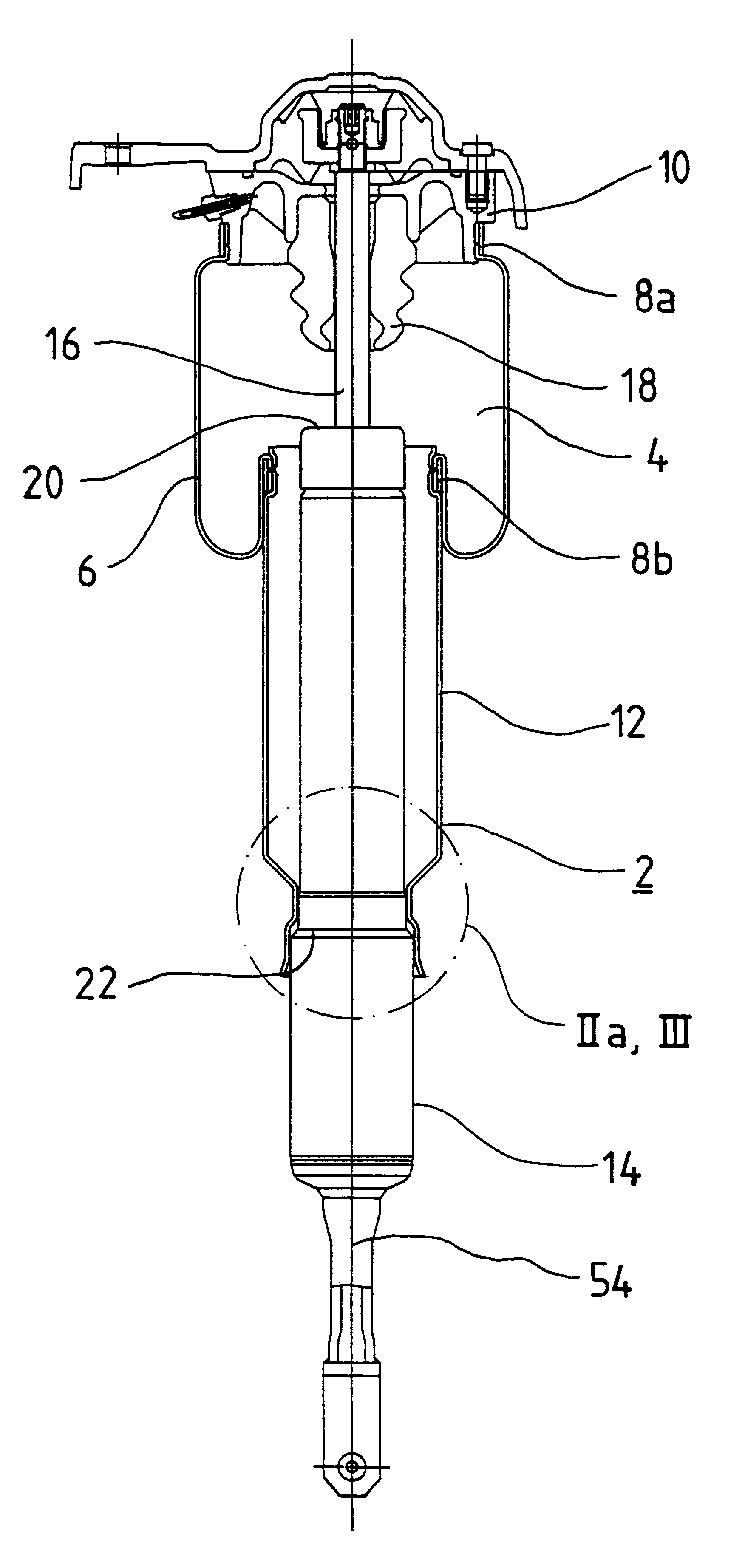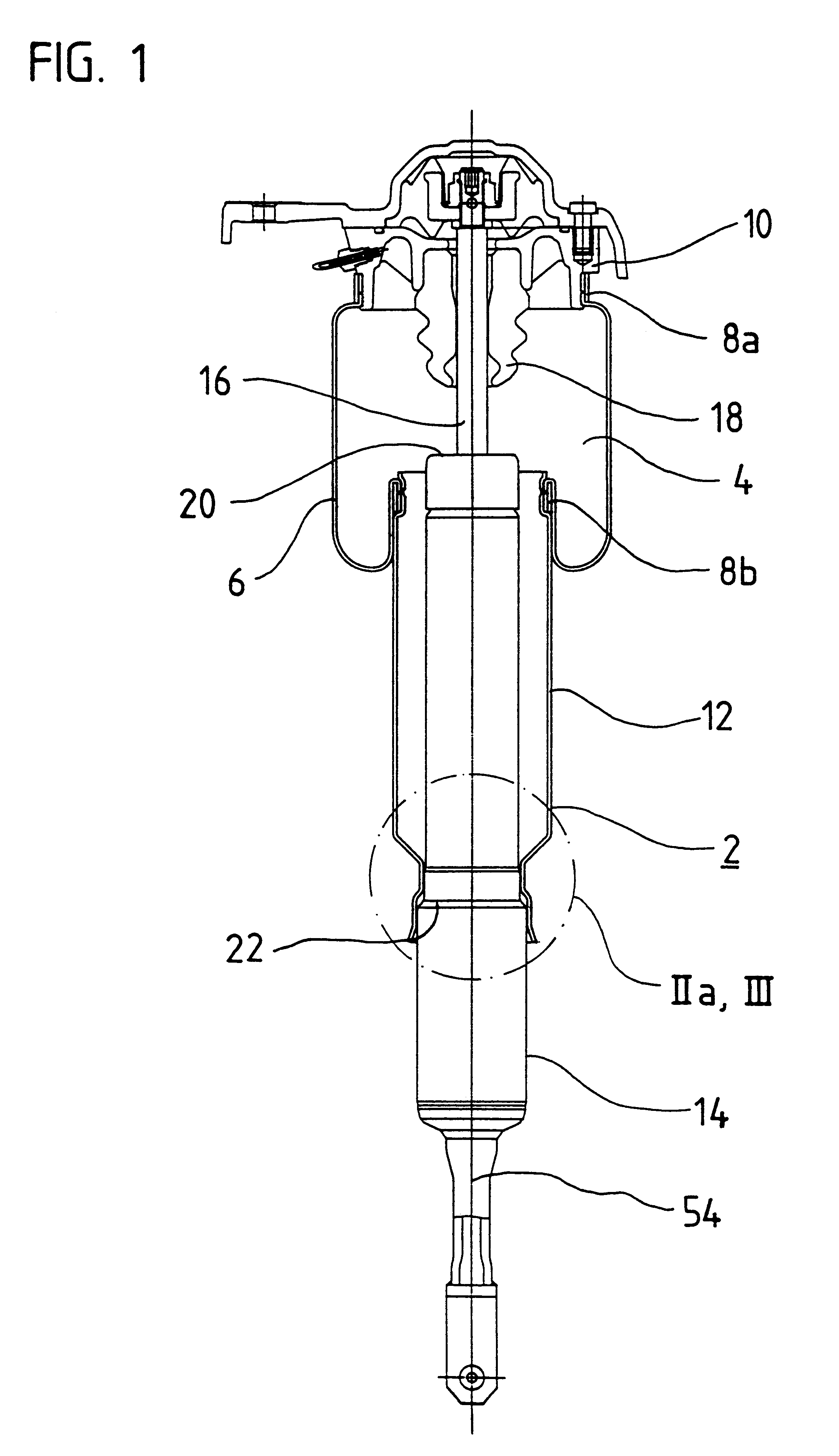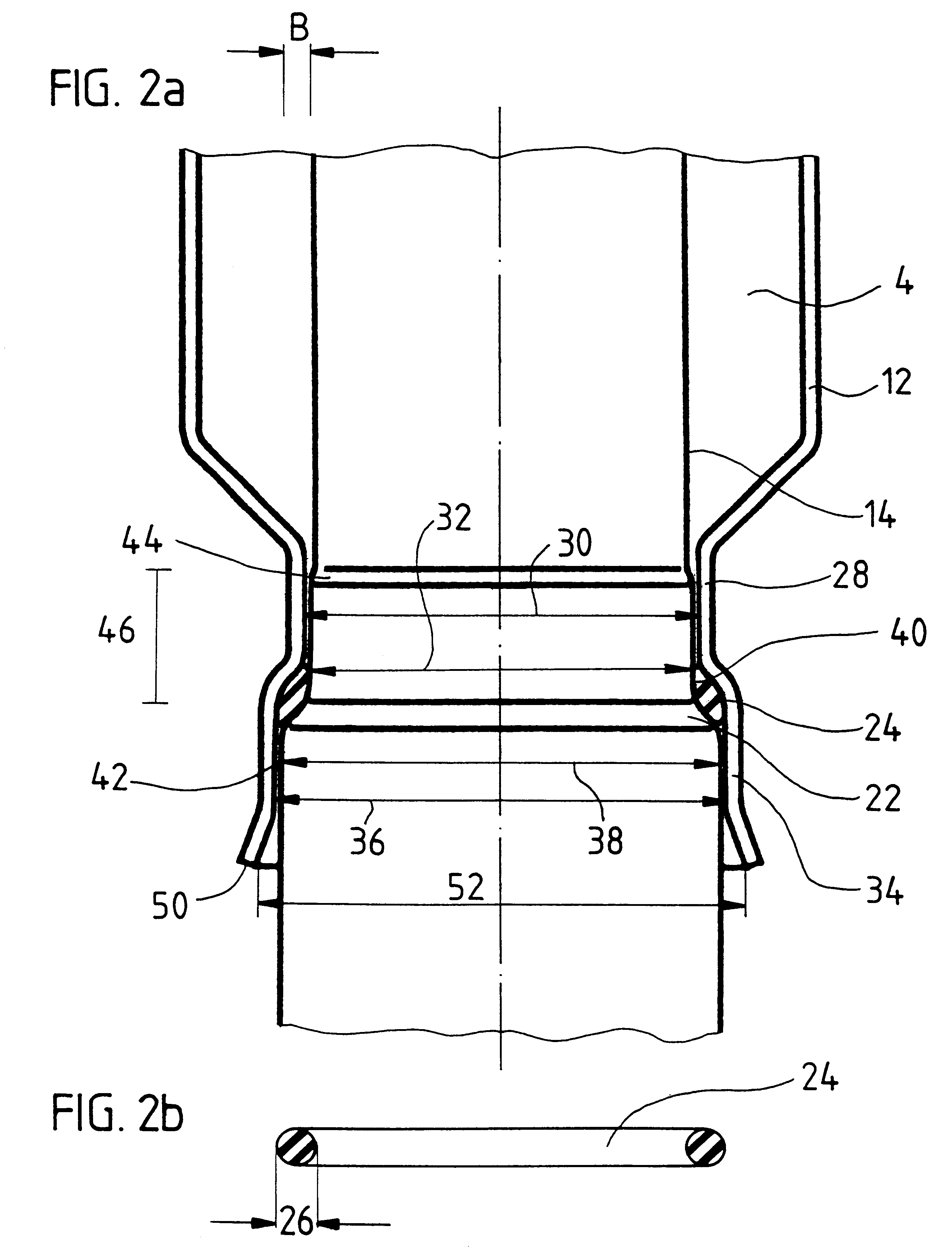Compressed-air landing strut and method for its manufacture
- Summary
- Abstract
- Description
- Claims
- Application Information
AI Technical Summary
Benefits of technology
Problems solved by technology
Method used
Image
Examples
Embodiment Construction
The advantages achieved with the present invention can be seen, in particular, by the fact that the attachment of the roll-off piston to the spring support is established in a simple manner, since we need merely an easily manufactured O-ring, available as an off-the-shelf part, which is placed on the offset of the spring support. In addition, due to the radial compression of the O-ring between the outer wall of the spring support and the inner wall of the roll-off piston, an air-tight seal against the environment is ensured for the spring space surrounding the pneumatic shock absorber. An additional advantage of the invention is that both the outer wall of the spring support in the region of the recess, and also the end region of the roll-off piston facing the spring support, can have certain manufacturing tolerances, since these are compensated by the high radial compression of the O-ring, and thus the air-tight sealing of the spring space against the environment is not adversely a...
PUM
 Login to View More
Login to View More Abstract
Description
Claims
Application Information
 Login to View More
Login to View More - R&D
- Intellectual Property
- Life Sciences
- Materials
- Tech Scout
- Unparalleled Data Quality
- Higher Quality Content
- 60% Fewer Hallucinations
Browse by: Latest US Patents, China's latest patents, Technical Efficacy Thesaurus, Application Domain, Technology Topic, Popular Technical Reports.
© 2025 PatSnap. All rights reserved.Legal|Privacy policy|Modern Slavery Act Transparency Statement|Sitemap|About US| Contact US: help@patsnap.com



